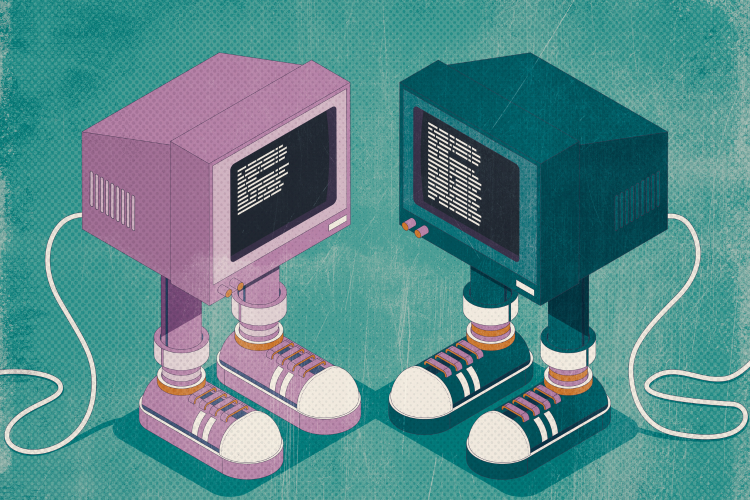Generative AI has often been framed as a transformative force for the workplace, with predictions of sweeping automation and job losses gaining momentum since the release of ChatGPT in late 2022.
Nearly three years later, however, labor market data suggests a different reality, one defined more by continuity than disruption.
A new report from The Budget Lab offers the most detailed look to date at how AI is, or isn’t, shaping employment in the U.S. economy.
Drawing on labor force data, occupation-level AI exposure metrics, and real-world usage data from OpenAI and Anthropic, the study finds only modest shifts in occupational composition. These changes largely mirror historical patterns seen during previous waves of technological innovation.
AI may be transformative, but its effects on the labor market so far are unfolding slowly and unevenly.
Why It Matters: Cutting through noise to understand AI’s true impact on jobs is essential. As adoption spreads across industries, evidence-based analysis like this provides a clearer view of where the workforce is actually changing and where it is not. For anyone making strategic decisions, grounding assumptions in data rather than hype is increasingly important.
- Occupational Change Is Faster but Within Historical Norms: The Budget Lab’s dissimilarity index, which tracks shifts in the mix of occupations since November 2022, shows the pace of change is only slightly faster than in previous tech-driven eras like the rise of personal computers or the internet. The labor market has shifted about 8 percentage points in 33 months, compared to roughly 7 percentage points over six years during the late 1990s. Much of this movement began before ChatGPT’s release, pointing to structural evolution rather than sudden AI-driven disruption.
- No Link Between AI Exposure and Job Loss: Using OpenAI’s “exposure” scores, the report groups jobs into low, medium, and high exposure categories. Since ChatGPT’s launch, the share of workers in each group has remained remarkably stable, with about 29% in low-exposure jobs, 46% in mid-level, and 18% in high-exposure occupations. Even among unemployed workers, exposure levels have not increased, undermining the narrative that AI is displacing workers en masse.
- Industry-Level Volatility Is Not Unique to AI: Some industries, most notably Information, Financial Services, and Professional & Business Services, have experienced larger shifts in job composition. But these trends started before generative AI and align with patterns of historical volatility. The Information sector, for example, has long experienced higher baseline churn, making what looks like “AI disruption” more likely to be a continuation than a rupture.
- Young Workers Show Slight but Unclear Divergence: There is a modest uptick in occupational differences between recent graduates (ages 20–24) and their older peers (25–34). While this might indicate early-career workers feeling pressure from AI, similar trends appeared in pre-AI years, such as 2021. The small sample size for this group also means other explanations, like a softening labor market, remain equally plausible.
- AI Usage Is Narrowly Focused: Anthropic’s Claude usage data shows real-world AI adoption concentrated in a handful of occupations, primarily coding and writing-heavy roles. Even in jobs with high theoretical AI exposure, usage remains low unless the work naturally aligns with LLM strengths such as programming, content generation, or data manipulation. This highlights an important insight that the potential for AI use does not guarantee adoption.
- Unemployment Trends Don’t Indicate AI: If AI were driving job losses, higher exposure scores among newly unemployed workers would be expected. But across all unemployment durations, from less than 5 weeks to over 27 weeks, exposure levels remain flat at 25–35%, and unemployment rates show no shift by exposure group. This suggests AI is not currently a major driver of joblessness.
- Automation and Augmentation Trends Remain Stable: Using Anthropic’s task-level data, roles were classified as “automated” or “augmented” depending on whether more than half of observed AI usage aligned with automation or support. Counting only observed tasks, 70% of employment involves high AI augmentation and 11% involves automation. Assuming unobserved tasks have zero usage, those figures fall to 3% and 0%, showing how methodology shapes perceptions. In both cases, no upward trend is detected.
- AI Adoption Skews Toward Coders and Creators: Claude usage data highlights a concentration of AI activity in software engineering, media, and creative writing, which are fields where current LLM capabilities excel. Other roles, especially clerical or administrative jobs with high theoretical exposure, show minimal usage. Adoption depends not just on task compatibility but also on culture, access, and workflows.
- Exposure Doesn’t Equal Disruption: A direct comparison of OpenAI’s exposure rankings and Anthropic’s usage data reveals limited correlation. Many occupations with high theoretical exposure have low observed usage, and vice versa. Real-world adoption appears more closely tied to technical affinity and task fit than to exposure level alone.
- Better Data Is the Missing Piece: OpenAI’s exposure metric provides a useful theoretical view, but it isn’t grounded in actual usage. Anthropic’s usage data is more concrete but limited to a single model and user base. Comprehensive, cross-platform AI usage data, aggregated across industries and enterprise APIs, is needed to fully understand AI’s real impact on labor. Without it, any assessment of disruption remains only partially visible.
Trusted insights for technology leaders
Our readers are CIOs, CTOs, and senior IT executives who rely on The National CIO Review for smart, curated takes on the trends shaping the enterprise, from GenAI to cybersecurity and beyond.
Subscribe to our 4x a week newsletter to keep up with the insights that matter.







